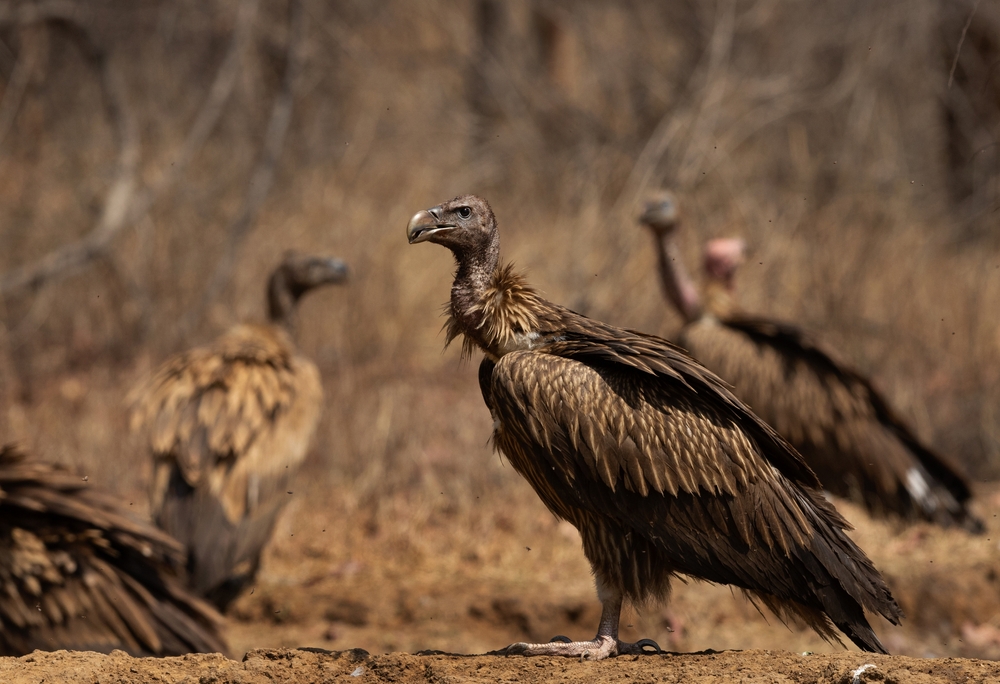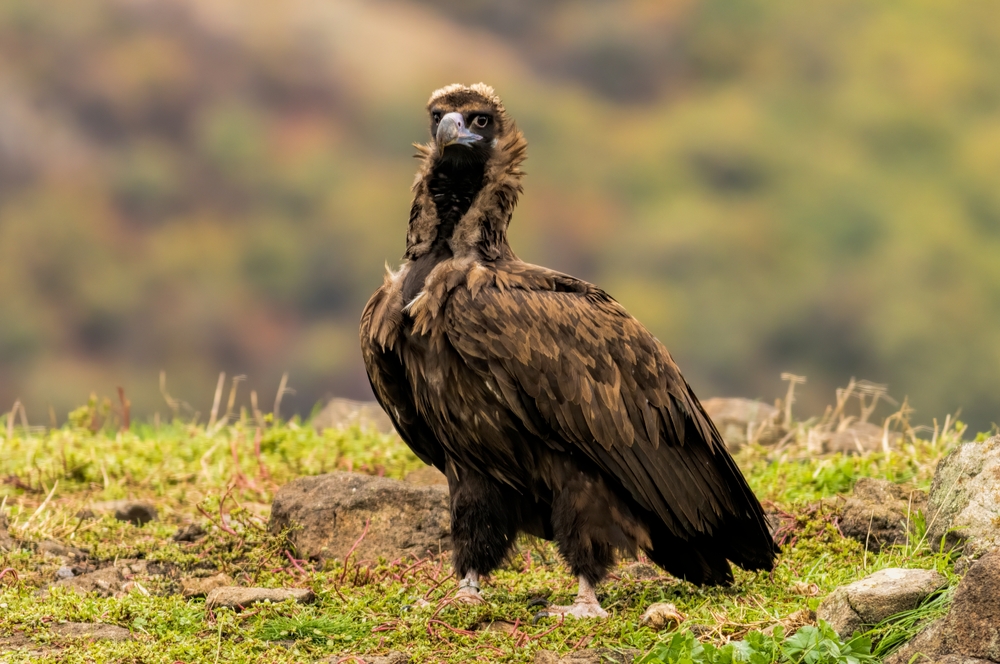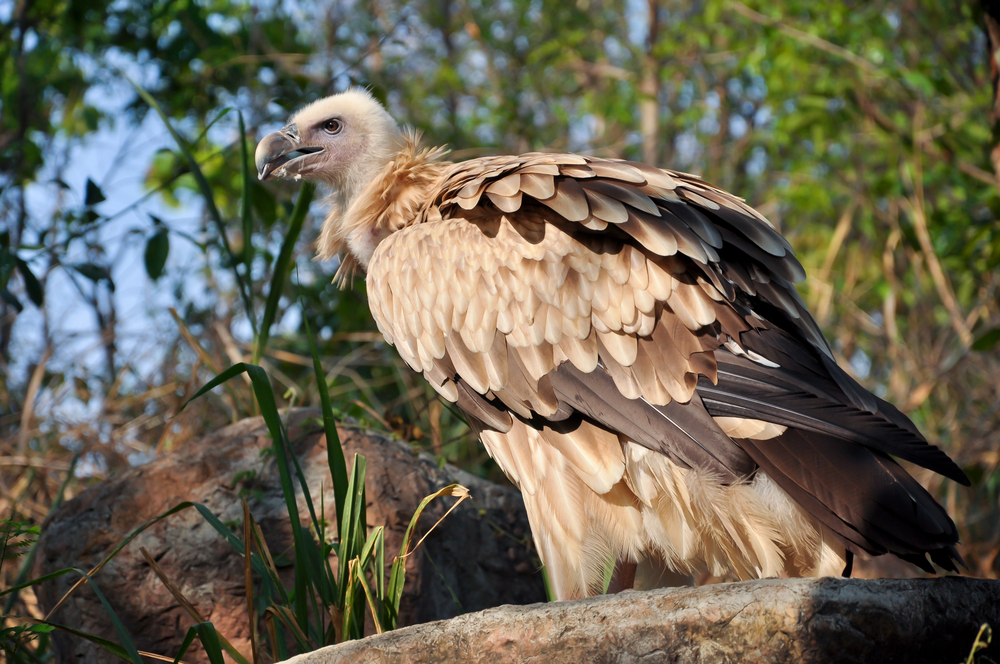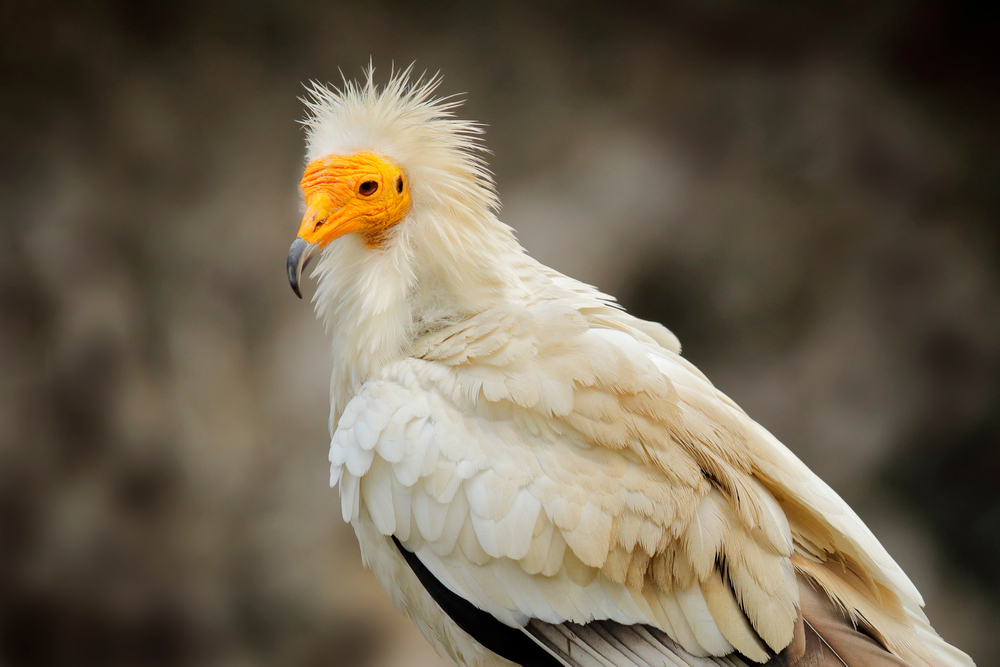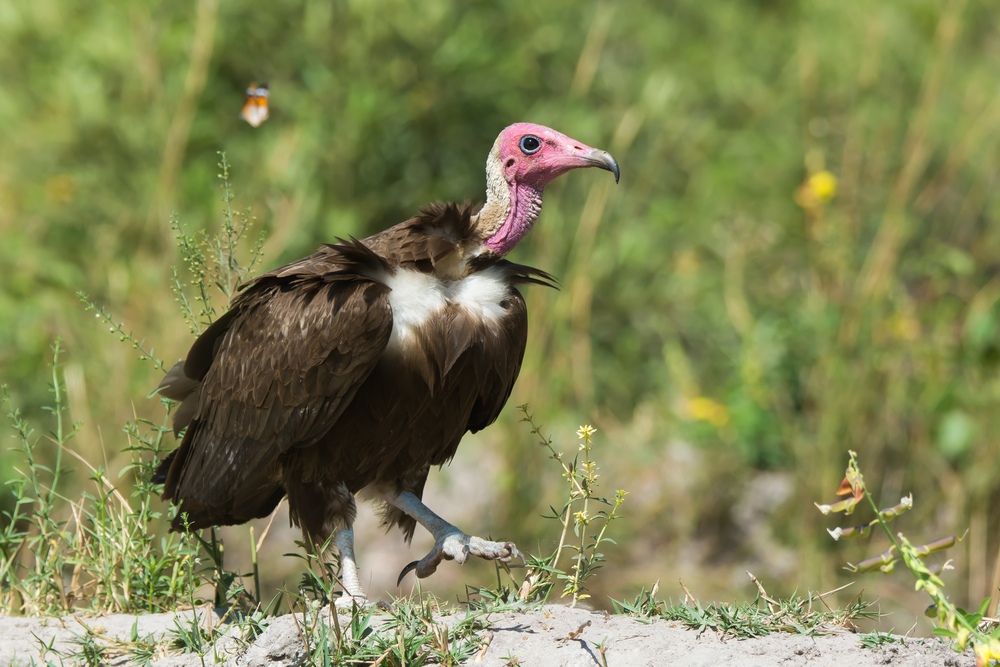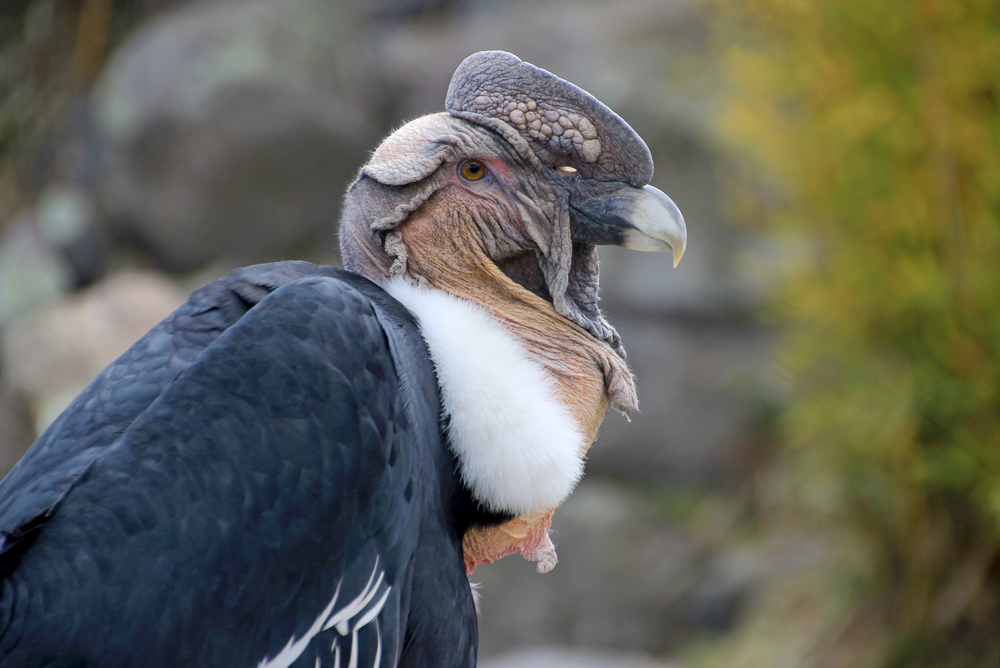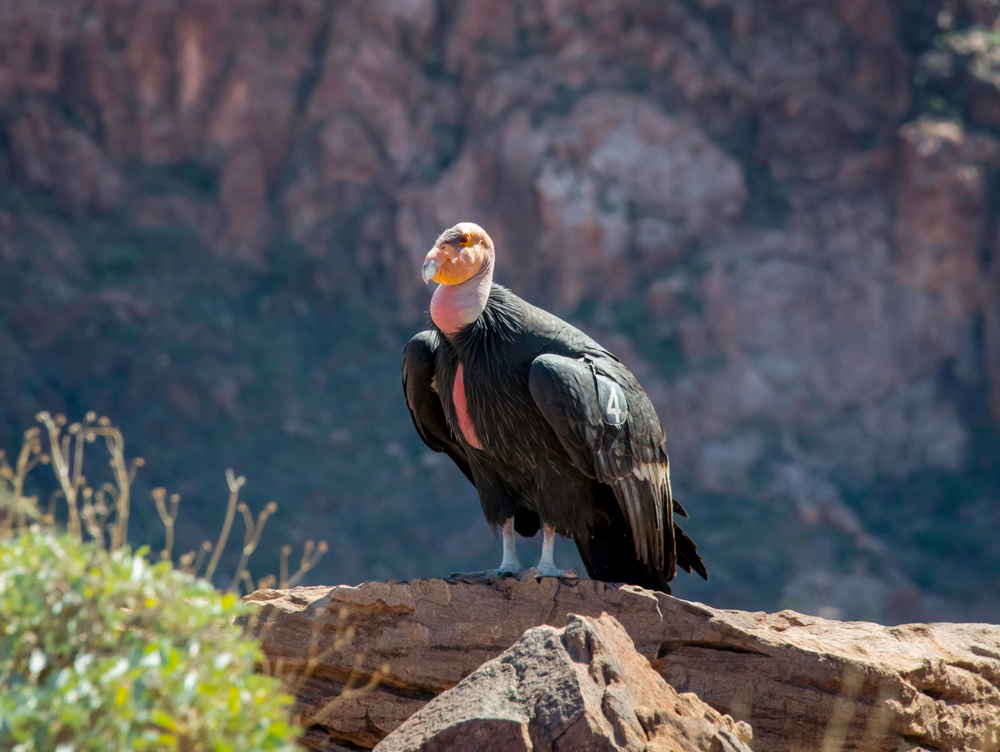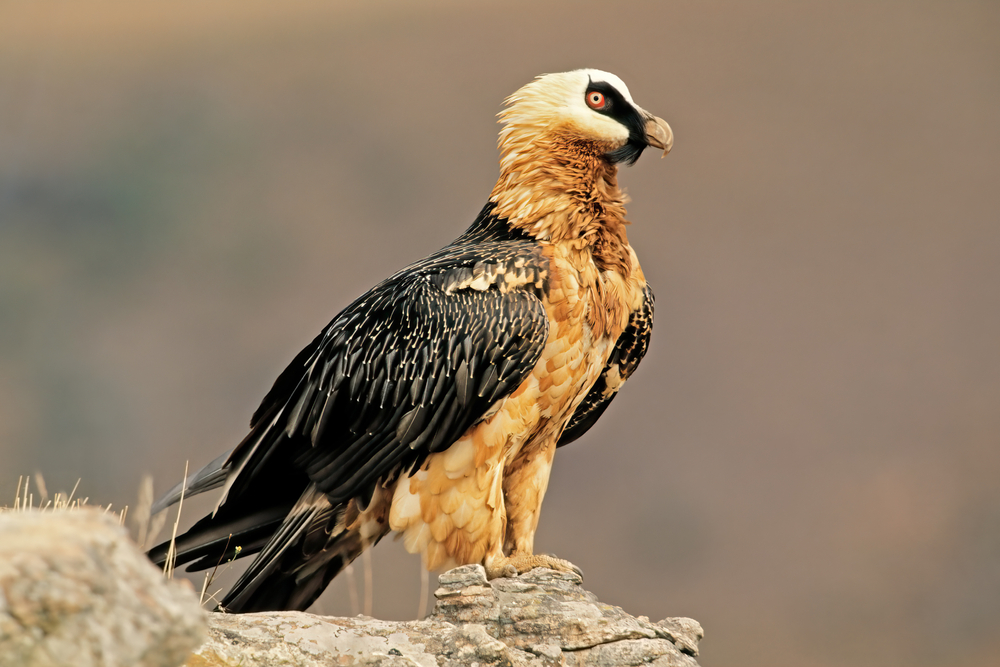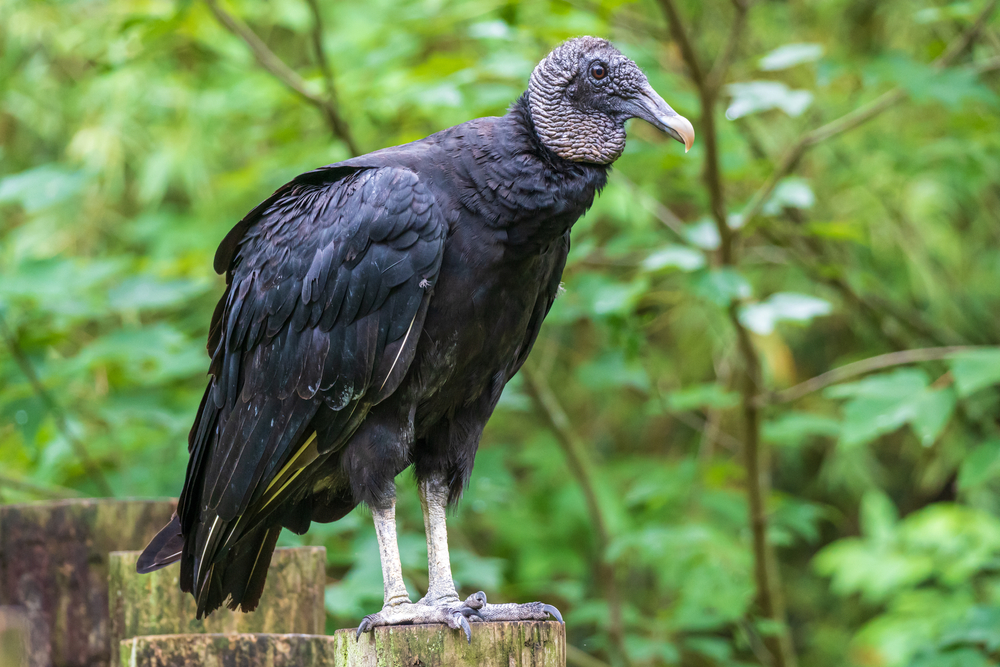The Indian Vulture (Gyps indicus) is most closely related to the Slender-billed Vulture (Gyps tenuirostris). For years, the two were considered the same species until separated by subtle differences in bill shape and distribution.
About
The Indian Vulture (Gyps indicus), a large Old World vulture of the Accipitridae family, is native to the Indian subcontinent, where it inhabits cliffs, gorges, and open landscapes near villages and grazing lands. Once abundant, this species has suffered catastrophic declines in recent decades, making it one of the most threatened scavengers in Asia.
The Indian Vulture is a massive bird, measuring 80–100 cm (31–39 in) in length with a wingspan of 2.3–2.6 meters (7.5–8.5 ft). It has pale buff to brown plumage with darker flight feathers, a whitish ruff at the base of the neck, and a long bare yellowish bill. Its featherless head and neck allow for hygienic feeding on carcasses, while its broad wings and soaring ability let it travel great distances in search of food.
As an obligate scavenger, the Indian Vulture feeds almost exclusively on the carcasses of livestock and wild animals. By rapidly consuming carrion, it prevents the spread of disease and plays a vital role in maintaining ecological and human health.
Breeding usually occurs on high cliffs, where colonies of pairs build large stick nests. A single egg is laid, and both parents share incubation and chick-rearing duties. Unlike some other vultures, this species rarely nests in trees, preferring rugged cliffs and escarpments.
The greatest threat to the Indian Vulture has been poisoning from diclofenac, a veterinary drug used to treat cattle. When vultures consumed treated carcasses, the drug caused fatal kidney failure, leading to population crashes of over 95% in some areas. Conservation efforts—including a ban on veterinary diclofenac, captive breeding programs, and the creation of “vulture safe zones”—are helping to stabilize populations, though recovery is slow.
Today, the Indian Vulture is listed as Critically Endangered, a sobering reminder of how human activity can rapidly devastate even once-common species.
Physical Characteristics
The Indian Vulture (Gyps indicus) is a medium-to-large Old World vulture, native to the Indian subcontinent, and closely related to the Slender-billed Vulture. It is one of the smaller members of the Gyps group.
Plumage:
-
Adults: Sandy-buff to pale brown body with darker brown flight feathers and tail. The underparts are lighter, giving them a somewhat two-toned appearance in flight.
-
Juveniles: Darker brown overall, gradually lightening as they mature.
Head and Face:
The head and neck are mostly bare, covered in sparse whitish down. The facial skin is pale yellowish to pinkish, with a long, narrow neck adapted for reaching deep into carcasses. The beak is ivory-colored, hooked, and sharp, suited for tearing flesh.
Body and Wings:
The body is slim and less bulky compared to larger Gyps vultures. Wings are long and broad, with dark flight feathers contrasting against paler coverts, giving a striking bicolored look in flight.
Tail:
The tail is short and squared, characteristic of most Gyps vultures, helping in stable soaring.
Size:
-
Length: 32–41 in (81–103 cm)
-
Wingspan: 7.2–8.5 ft (2.2–2.6 m)
-
Height at Rest: About 2.6–3.0 ft (0.8–0.9 m)
Weight:
-
Adults: 11–15 lbs (5–7 kg)
The Indian Vulture’s sandy-buff coloration, slender body, and broad wings distinguish it from the darker Cinereous Vulture and the larger Himalayan Vulture. It is most often seen soaring above cliffs and dry open country in India and surrounding regions.
Reproduction
The Indian Vulture (Gyps indicus) follows the typical slow reproductive pattern of Gyps vultures, producing only one chick per year and relying on long-term parental care.
1. Mating and Courtship:
Pairs are monogamous, forming long-term bonds. Courtship often includes aerial displays, synchronized circling, and mutual preening at cliff colonies.
2. Nesting Sites:
Unlike some vultures that use trees, Indian Vultures primarily nest on cliffs and rocky ledges, often forming large breeding colonies with dozens or even hundreds of pairs. Nests are bulky structures made of sticks and lined with grass, hides, or wool.
3. Egg Laying:
The female lays a single egg per clutch, typically between November and March, depending on region and climate. The egg is dull white, sometimes with light speckles.
4. Incubation:
Incubation lasts about 50–55 days, with both parents sharing duties equally.
5. Hatching and Care of Chicks:
The chick hatches covered in white down and is altricial, requiring constant care. Both parents regurgitate food to feed the chick, sometimes traveling long distances in search of carrion.
6. Fledging and Independence:
Young vultures fledge at around 100–120 days old, but remain dependent on their parents for food for several more months as they strengthen their flying and foraging skills.
7. Breeding Frequency:
Pairs breed once per year, with strong fidelity to nesting cliffs, often returning to the same ledges for multiple seasons.
The Indian Vulture’s reliance on single-egg clutches, long chick dependency, and cliff-colony nesting make it highly vulnerable to environmental threats, especially the widespread poisoning from veterinary drugs like diclofenac.
Lifespan
The Indian Vulture (Gyps indicus) is long-lived, like other large vultures, but its survival has been severely impacted by modern threats, particularly poisoning from veterinary drugs.
Lifespan in the Wild:
In the wild, Indian Vultures can live 25–30 years, with some reaching up to 35 years in stable conditions. However, due to widespread poisoning from diclofenac-contaminated livestock carcasses, average survival in the wild has been drastically reduced in many regions.
Lifespan in Captivity:
In captivity, with consistent food and veterinary care, they can live 40–45 years, reflecting their natural longevity when threats are removed.
Threats to the Indian Vulture:
-
Diclofenac Poisoning: The leading cause of mortality; ingestion of livestock carcasses treated with this veterinary drug causes kidney failure.
-
Food Shortages: Declines in traditional livestock carcass disposal reduce carrion availability.
-
Habitat Disturbance: Quarrying, construction, and tourism disrupt cliff-nesting colonies.
-
Electrocution and Collisions: Expanding power lines pose risks in many parts of India.
-
Slow Reproduction: With only one chick per year, population recovery is extremely slow once declines begin.
The Indian Vulture’s long potential lifespan is undermined by high adult mortality rates, which have caused catastrophic declines across South Asia. Conservation measures, such as diclofenac bans and vulture safe zones, are critical to restoring its survival potential.
Eating Habits
The Indian Vulture (Gyps indicus) is a specialized scavenger, relying almost entirely on carrion for survival. Like other Gyps vultures, it plays a vital role in cleaning up ecosystems.
Diet:
-
Large Mammal Carcasses: Feeds mainly on livestock such as cattle, buffalo, goats, and camels, as well as wild ungulates like deer and antelope.
-
Soft Tissue Preference: Consumes muscle, skin, and internal organs, often leaving bones for other scavengers such as the Bearded Vulture.
-
Occasional Scraps: May feed on smaller animal remains but prefers larger carcasses that can sustain many vultures.
Hunting Strategy:
-
Soaring Search: Uses keen eyesight to locate carcasses while soaring high above open plains and dry scrublands.
-
Social Feeding: Arrives at carcass sites in large numbers, feeding communally in a frenzied but organized manner.
-
Dependence on Other Scavengers: Often relies on smaller scavengers or humans to first open the carcass before accessing flesh.
Feeding Behavior:
-
Dominated by a social hierarchy, where stronger adults feed first, followed by younger individuals.
-
Capable of gorging on several pounds of meat in one sitting, then fasting for days.
-
Its bald head and long neck are perfectly adapted for feeding deep inside carcasses without fouling feathers.
Success and Adaptability:
The Indian Vulture has historically been one of the most abundant scavengers in South Asia, thriving alongside human livestock practices. However, its dependence on livestock carcasses has also made it extremely vulnerable to diclofenac poisoning, causing population crashes of more than 95% in recent decades.
Uniqueness
The Indian Vulture (Gyps indicus) is a distinct South Asian scavenger, once common across India’s skies but now critically threatened, with several traits that set it apart.
Cliff-Colony Nester:
Unlike the White-rumped Vulture, which often nests in trees, the Indian Vulture nests almost exclusively on cliff faces, often in large colonies of dozens to hundreds.
Distinct Appearance:
Recognizable by its sandy-buff plumage, pale underparts, and contrasting dark flight feathers, giving it a lighter appearance than many other Gyps vultures.
Narrow Range:
Endemic to the Indian subcontinent, it is far more restricted in range than the widespread Griffon or Himalayan Vultures.
Critical Role in Ecosystems:
As a primary consumer of livestock carcasses, it played an essential role in preventing the spread of diseases such as anthrax and rabies by rapidly disposing of carrion.
Victim of Diclofenac Crisis:
The Indian Vulture was one of the species most devastated by diclofenac poisoning, suffering catastrophic population declines of over 95% since the 1990s.
Indicator of Ecosystem Health:
Because of its sensitivity to toxins, the survival of Indian Vultures serves as a key measure of safe livestock management practices across South Asia.
The Indian Vulture’s cliff-nesting habits, regional endemism, and conservation story make it one of the most unique and important vultures of the Indian subcontinent.
Be the First to Share Photos of This Species.
FAQ’s
1. What species is closest to the Indian Vulture?
2. How does the Indian Vulture compare to other vultures?
The Indian Vulture is smaller and paler than the Himalayan Vulture and less bulky than the Cinereous Vulture. Unlike the White-rumped Vulture, which nests in trees, the Indian Vulture prefers cliff colonies. It is more localized than the widespread Griffon Vulture, with a range almost entirely confined to the Indian subcontinent.
3. What national parks provide the best opportunity to see an Indian Vulture?
What national parks provide the best opportunity to see an Indian Vulture?
-
Gir National Park (India): A key site for nesting colonies on cliffs.
-
Ranthambore National Park (India): Frequently observed soaring above rocky ridges.
-
Bandhavgarh National Park (India): Known for breeding colonies in cliff habitats.
-
Satpura National Park (India): Good location for sightings in central India.
-
Chambal Wildlife Sanctuary (India): Stronghold for vulture colonies along river cliffs.



































































